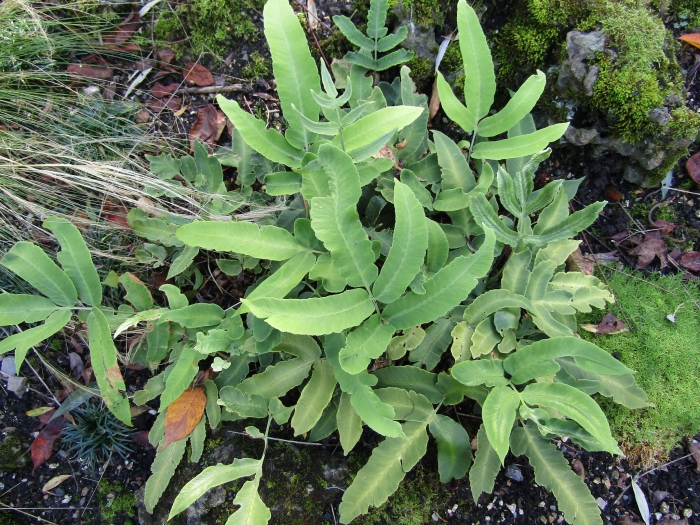Siebold’s Wood Fern
(Dryopteris sieboldii)
Siebold’s Wood Fern (Dryopteris sieboldii)
/
/

Leonora (Ellie) Enking
CC BY-SA 2.0
Image By:
Leonora (Ellie) Enking
Recorded By:
Copyright:
CC BY-SA 2.0
Copyright Notice:
Photo by: Leonora (Ellie) Enking | License Type: CC BY-SA 2.0 | License URL: https://creativecommons.org/licenses/by-sa/2.0/ | Uploader: wallygrom | Publisher: Flickr |















Estimated Native Range
Summary
Dryopteris sieboldii, commonly known as Siebold’s Wood Fern, is an evergreen fern native to the temperate forest regions of East Asia, including South-Central China, Taiwan, and Japan. It typically grows to a height of 1-3 feet (0.3-0.9 meters) and a width of 2-3 feet (0.6-0.9 meters). This fern features leathery, dark green fronds that give it a unique texture in the garden. The fronds are triangular and bipinnate, providing an attractive, bold appearance throughout the year.
Siebold’s Wood Fern is valued for its evergreen foliage, which maintains a lush appearance even in winter. It is suitable for shaded borders, woodland gardens, and as an understory plant in shaded areas. It thrives in moist, well-drained, humus-rich soil and prefers part shade to full shade. While it can tolerate some sun, excessive sunlight can scorch the fronds. It is relatively low maintenance, requiring little care once established, and is resistant to most pests and diseases. However, it may suffer from rust and leaf spot if conditions are too damp. This fern is not known for being invasive and does not have aggressive roots, making it a safe choice for most garden settings. It has been awarded the Royal Horticultural Society’s Award of Garden Merit for its ornamental value.CC BY-SA 4.0
Siebold’s Wood Fern is valued for its evergreen foliage, which maintains a lush appearance even in winter. It is suitable for shaded borders, woodland gardens, and as an understory plant in shaded areas. It thrives in moist, well-drained, humus-rich soil and prefers part shade to full shade. While it can tolerate some sun, excessive sunlight can scorch the fronds. It is relatively low maintenance, requiring little care once established, and is resistant to most pests and diseases. However, it may suffer from rust and leaf spot if conditions are too damp. This fern is not known for being invasive and does not have aggressive roots, making it a safe choice for most garden settings. It has been awarded the Royal Horticultural Society’s Award of Garden Merit for its ornamental value.CC BY-SA 4.0
Plant Description
- Plant Type: Fern
- Height: 1-3 feet
- Width: 2-3 feet
- Growth Rate: Slow
- Flower Color: N/A
- Flowering Season: Non-Flowering
- Leaf Retention: Evergreen
Growth Requirements
- Sun: Part Shade, Full Shade
- Water: Medium
- Drainage: Slow, Medium, Fast
Common Uses
Deer Resistant, Drought Tolerant, Low Maintenance, Potted Plant
Natural Habitat
native to the temperate forest regions of East Asia, including South-Central China, Taiwan, and Japan
Other Names
Common Names:
Scientific Names: , Dryopteris sieboldii, Aspidium sieboldii, Nephrodium sieboldii, Aspidium podophyllum, Lastrea podophylla, Lastrea sieboldii, Polystichum sieboldii, Pycnopteris sieboldii,
GBIF Accepted Name: Dryopteris sieboldii (T.Moore) Kuntze